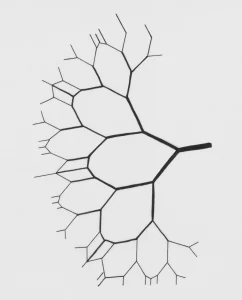Abstract
Background: Ayahuasca is a hallucinogenic plant preparation which usually contains the vine Banisteriopsis caapi and the shrub Psychotria viridis. This tea originates from the Amazon Basin where it is used in religious ceremonies. Because interest in these religious groups spreading as well as awareness of use of ayahuasca for therapeutic and recreational purposes, its use is increasing. Banisteriopsis caapi is rich in β-carbolines, especially harmine, tetrahydroharmine and harmaline, which have monoamine oxidase inhibiting (MAOI) activity. Psychotria viridis contains the 5HT2A/2C/1A receptor agonist hallucinogen N,N-dimethyltryptamine (DMT). Usual desired effects include hallucination, dissociation, mood alteration and perception change. Undesired findings previously reported are nausea, vomiting, hypertension, and tachycardia.
Methods: All human exposure calls reported to the American Association of Poison Controls Centers’ (AAPCC) National Poison Data System (NPDS) between September 1, 2005 and September 1, 2015 were reviewed. Cases were filtered for specific plant derived ayahuasca-related product codes. Abstracted data included the following: case age and gender, exposure reason, exposure route, clinical manifestations, treatments given, medical outcomes and fatality.
Results: Five hundred and thirty-eight exposures to ayahuasca botanical products were reported. The majority of the calls to poison control centers came from healthcare facilities (83%). The most common route of exposure was ingestion. Most cases were men (437, 81%, 95% CI 77.7% – 84.3%). The median age was 21 (IQR 18-29). Most exposures were acute. Three hundred thirty-seven (63%) were reported to have a major or moderate clinical effect. The most common clinical manifestations reported were hallucinations (35%), tachycardia (34%), agitation (34%), hypertension (16%), mydriasis (13%) and vomiting (6%). Benzodiazepines were commonly given (30%). There were 28 cases in the series who required endotracheal intubation (5%). Four cases were reported to have had a cardiac arrest and 7 a respiratory arrest. Twelve cases had a seizure. Reports of exposures called to poison centers appeared to increase during this period based on annual estimates. Three fatalities were reported.
Conclusions: Ayahuasca use appears to be rising in the United States based on calls to poison control centers. While most use is reported to be safe and well tolerated, with possible beneficial effects, serious and life threatening adverse manifestations are possible. Most of the exposures reported to poison control centers were young people, more likely to be men and already in a healthcare facility. Further research, which includes comprehensive drug testing, will be needed to better identify the risks and effects of ayahuasca use.
Heise, C. W., & Brooks, D. E. (2016). Ayahuasca exposure: descriptive analysis of calls to US poison control centers from 2005 to 2015. Journal of medical toxicology, 1-4. 10.1007/s13181-016-0593-1












